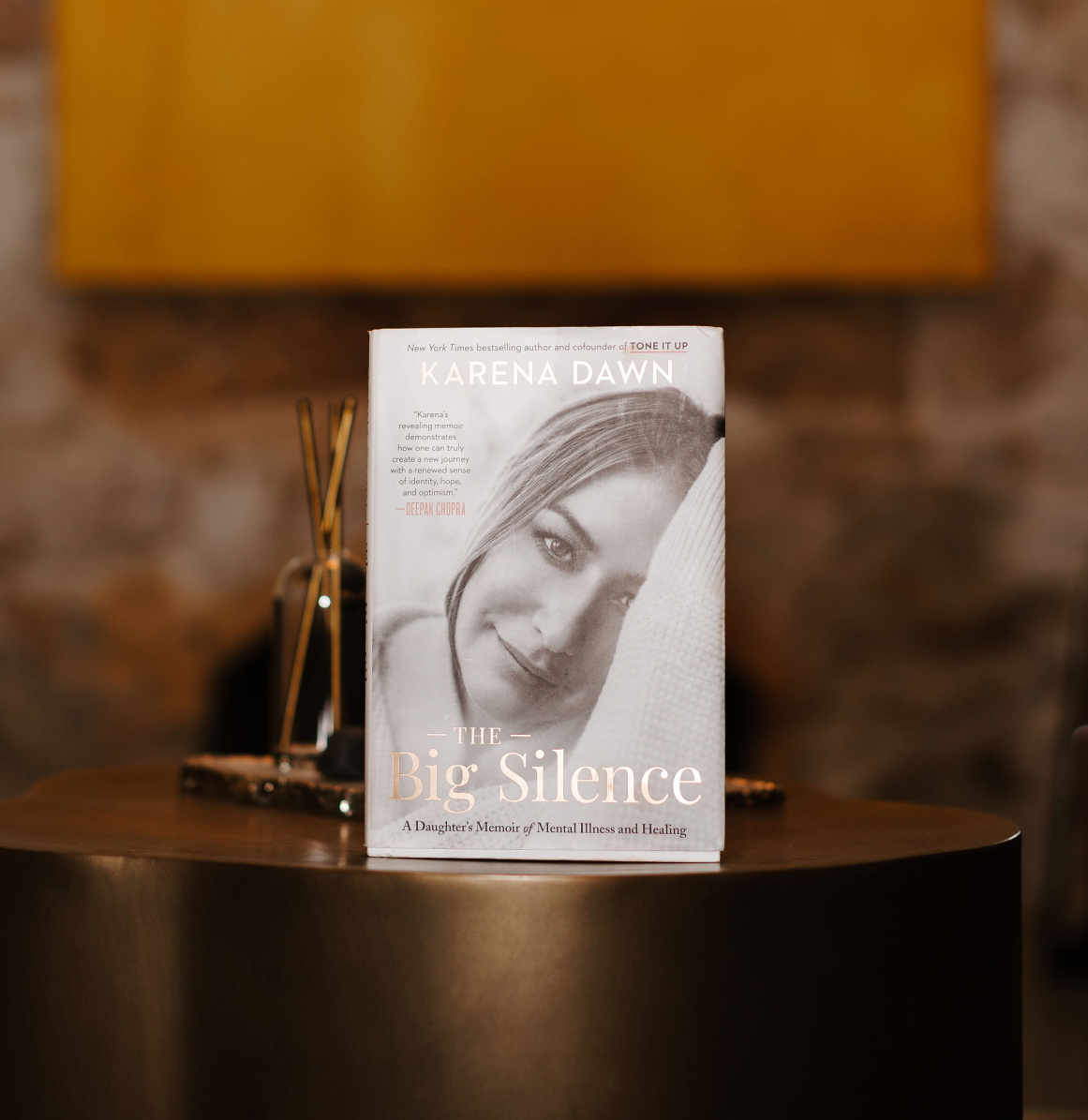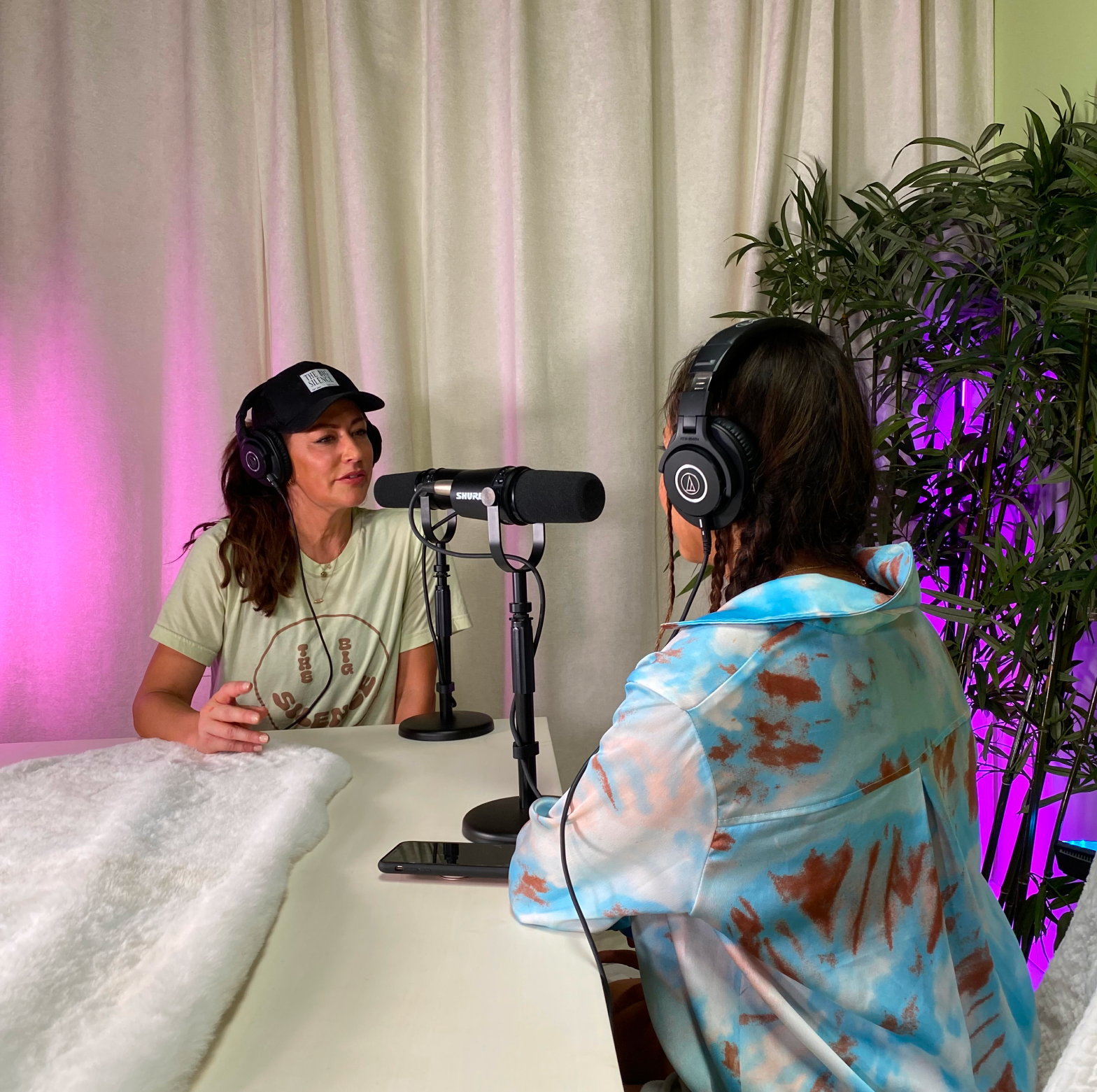
Struggling With Anxiety? 5 Tools To Have In Your Toolkit
So many of us struggle with anxiety. Anxiety disorders are the most common mental illness in the U.S., impacting 40 million adults, or 18.1% of the population, every year. And anxiety is becoming even more prevalent. In 2020, global anxiety rates went up by 25%, according to the World Health Organization.
“Anxiety increases when there is any fear, perceived threat, or the fear of the unknown, which has been extremely common for individuals to feel these past couple of years,” says licensed clinical social worker Morgan Winder, LMSW. “Not only did the pandemic spark new anxiety triggers, but in my practice I saw the pandemic exacerbate current symptoms and intensify the frequency of anxiety that was already present.”
Anxiety is so common, yet there is still a lot of shame, judgment, and misunderstanding around it. “Anxiety is a feeling and everyone has anxiety, although that doesn’t mean that everyone meets the diagnostic criteria for an anxiety disorder,” says licensed clinical social worker Jenna Stark, MSSW, LCSW, LICSW. “It’s important for people to become more educated and comfortable talking about their emotions so they can identify what is making them anxious. Let’s be curious about it instead of judging it because often it’s the judgment of the emotion that causes more distress than the emotion itself.”
So let’s get curious together!
How We Experience Anxiety
Everyone experiences anxiety differently, but there are some telltale ways that anxiety often manifests itself. “The number one way we can notice and identify anxiety is based on physical symptoms,” Winder says. “I explain this to clients as our own body’s alarm clock; it goes off and triggers physical symptoms to notify us of a perceived threat.”
Common Symptoms of Anxiety: How Does It Manifest?
Some of the most common symptoms of anxiety include stomach pain, nausea, rapid heart rate, difficulty breathing, weakness, sweating, muscle tension, sleep disturbances, skin breakouts, headaches, and heightened irritability.
“The body keeps the score,” Stark says. “Often we know rationally our life isn't in danger but our body instinctively has a fight or flight response like we’re being chased by a cheetah.”
Winder seconds this. “Anxiety is a reaction based on a perceived threat; the key word being perceived,” she says. “Our brain can have a difficult time deciding the difference between us being worried compared to being in a real life or death situation.” That’s why anxiety serves a purpose in some ways. Explains Winder, “It is OK to experience anxiety sometimes. It’s our brain and body’s way to protect us from harm.”
Exploring Anxiety and Its Management in Therapy
But what if that protection mechanism is causing more harm than good? What if your anxiety is interfering with your work, family, relationships, hobbies, and everyday routine? That is a sign you may want to seek help from a professional counselor.
“A therapist will help you identify what triggers your anxiety,” Winder says. “Once you are aware of your triggers, therapy can help you challenge your thinking patterns, which will assist with reducing anxiety.” Winder highly recommends Cognitive Behavioral Therapy for anyone struggling with anxiety.
Therapy is also a safe space and unique relationship where you can focus on yourself and feel comfortable to share your anxieties. “You have a place for someone to bear witness to your suffering and validate your feelings,” Stark says. “You might be anxious but feel silly sharing it with others. Your therapist can meet you where you are.”
Looking for a therapist who’s right for you and can help you manage your own anxiety? Try this resource.
Building Your Own Anxiety-Soothing Toolkit: 5 Tips for Anxiety Management
In addition to therapy, there are simple practices you can try at home to help mitigate anxiety and cope with it when it comes up. Here are five expert-recommended tools for your anxiety management toolkit:
Anxiety Management Tip #1: Reconnect to Your Body
The key to this is letting your body know that the threat isn’t really life or death — the cheetah isn’t there! To do this, we need to send signals to our sympathetic nervous system (the fight or flight response) to stand down, Stark explains.
Here are a few ways to shift from the sympathetic system to the parasympathetic (rest and digest) system: going for a walk, deep breathing in for three counts and out for five counts, splashing cold water on your face, physical touch like a hug, or physical release like crying.
In a moment of distress, Stark also recommends doing an exercise like identifying ten green things in the room. “Do anything that forces you to pay attention in the present and get your body back online,” she says. “This sends a message to your body that you may be upset, but there’s no immediate threat.”
Anxiety Management Tip #2: Identify the Thought and Feeling
In the Cognitive Behavior Therapy approach, the goal is to identify our thoughts and feelings and how they impact our behavior, Stark explains.
She gives this example: I texted my friend and she didn’t answer. I had the thought she was mad at me. That made me feel anxious and scared, so my behavior was to cry and eat a pint of ice cream. She texted me an hour later.
Next time something like this happens, you can look for evidence to support your thoughts and feelings. Do you have any other evidence that your friend is mad at you? What other reasons could she have for not texting you back? Maybe she is away from her phone or busy with a work project? Thinking that through can help you shift the behavior reaction.
There are apps like CBT Thought Diary where you can keep a tangible record of your thoughts, feelings, and behaviors to help yourself make sense of anxious patterns.
Anxiety Management Tip #3: Try Guided Meditation
You know that at The Big Silence, we are huge proponents of mindful meditation. And so is our expert Morgan Winder.
“Deep breathing and meditation significantly help connect your brain and body to let your mind know you are safe and okay. This will reduce those unpleasant symptoms and help you feel in control of the anxious thoughts,” she says “Guided meditations also help with challenging negative thinking patterns and allow you to be present, which we don’t experience often in our day-to-day routines.”
You can find soothing guided meditations from Karena in the Tone It Up app!
Anxiety Management Tip #4: Practice Regular Self-Care to Manage Your Anxiety
Making self-care and other supportive lifestyle habits a priority can help you manage and ultimately reduce anxiety. Winder suggests focusing on quality sleep, reducing screen time and time on social media, making meaningful social connections, and mindfulness activities such as walking, exercising, and enjoying hobbies. “These will assist with regulating emotions,” she says. “The more we can make time for ourselves — even five to ten minutes — the more it will overall reduce stress and anxiety.”
Anxiety Management Tip #5: Implement a Routine
“I’m a big fan of routine and structure,” Stark says. “There’s already so much uncertainty in the world.” She suggests having some regular touchstones throughout your day like having tea every morning, working out at a certain time, and creating a bedtime routine. “You need to have a hierarchy of needs met before you go to the next level in combating anxiety,” she says. “Let’s start with eating, sleeping, breathing, exercise, and feeling safe in our bodies, and then we can go from there!”
More tools and resources for anxiety:
Big Feels Monday: Let's Talk About Anxiety
How to Get Started with Mindfulness and Meditation to Reduce Anxiety and Depression
Thoughts Can't Kill: Understanding the Roots of Anxiety
This breathing exercise provides immediate relief from anxiety.
Cooking up anxiety relief with Dr. Uma Naidoo.
Want to learn more about these anxiety experts?
You can find Jenna Stark’s website here and her Instagram here. She is a licensed clinical social worker in California and Massachusetts.
You can find Morgan Winder’s website here and her Instagram here. She works in private practice in Phoenix, Arizona, and she is currently the chair for a service committee organizing community events to help individuals access mental healthcare.
The information provided by Jenna Stark and Morgan Winder is for educational purposes only, and does not substitute for professional medical advice. Advise users to consult a medical professional or healthcare provider if they're seeking medical advice, diagnoses, or treatment.
**Please note that if your thoughts start becoming hopeless or suicidal, contact emergency at 988 or 911 and crisis services immediately. You can find more resources here. Text HERO to 741741 to be connected with a trained crisis counselor.











1 comment
I love this, and I was wandering is there an app like cbt thought diary for anriod phones. It says it’s only for Apple. I don’t have an apple